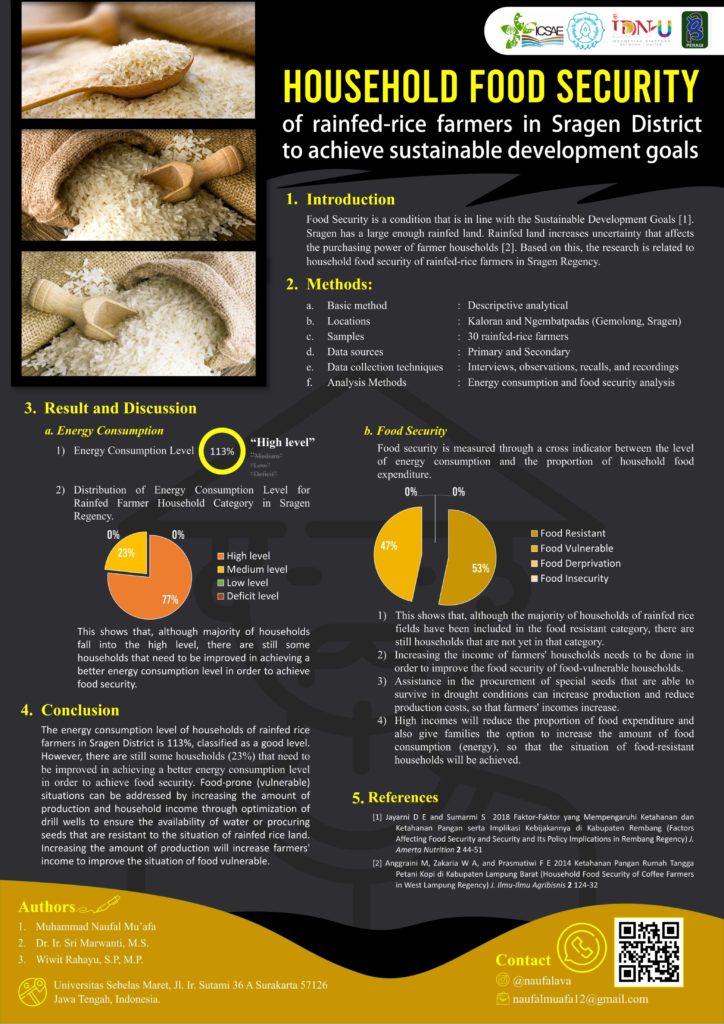Paper ID: 96
Household Food Security of Rainfed-Rice Farmers in Sragen District to Achieve Sustainable Development Goals
M N Mu’afa,, S Marwanti, and W Rahayu
Universitas Sebelas Maret, Jl. Ir. Sutami 36 A Surakarta 57126, Jawa Tengah Indonesia
Email: naufalmuafa12@gmail.com
Goal 2 of the Sustainable Development Goals is Zero Hunger or ensure food security in the world. This study aims to determine households’ food security in Sragen District using descriptive and analytical methods with survey techniques. The research was conducted in Gemolong Sub-district, Sragen District. The determination of village samples is done deliberately (purposive) with consideration of the largest rainfed rice fields. The data analysis used is the analysis of energy consumption and household food security. The results showed that the energy consumption of farmers’ households amounted to 6,041 kcal/day with an adequacy rate of 5,368 kcal/day, then obtained energy consumption rate of 113% and classified in the category of high level because energy consumption rate ≥ 100%. Household food security conditions showed that 53.33% were food resistant households and 46.67% were food vulnerable. Increasing the amount of production and household income by optimizing drill wells to ensure water availability or procurement of seeds resistant to rainfed rice field can address food vulnerable situations.
